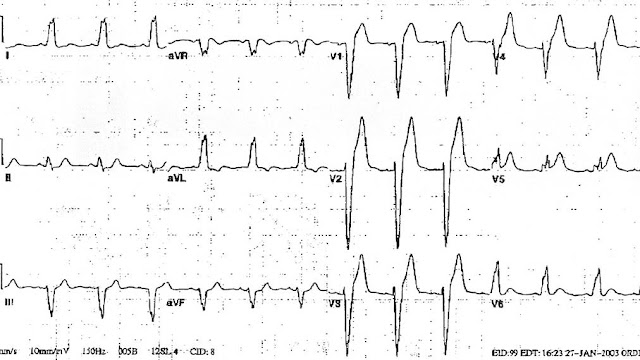So what does "inferior" ST depression represent? It is reciprocal to high ST elevation until proven otherwise.
Here is the EKG of a 50 year old man with epigastric discomfort:

Notice the very subtle ST depression in III and aVF. aVF (circled) has 0.5 mm of ST depression in the context of a 1 mm QRS (ST depression should be considered with proportionality in mind). Lead III also shows ST depression. These should be interpreted as reciprocal to aVL, the opposite lead. As in this case, the reciprocal ST depression is often much more evident than the ST elevation in aVL, which is only 0.5 mm in the context of a 5 mm R-wave. This inferior ST depression is most likely to be due to poor flow in the diagonal or circumflex arteries.
This was interpreted as normal, but it is not normal. This is very subtle and easily missed, but the prepared mind can see it.
The patient was sent home. He suffered a cardiac arrest and was resuscitated, underwent therapeutic hypothermia for coma, and had his occluded circumflex opened with PCI. He had a prolonged but nearly complete recovery and is able to go back to work part time.




